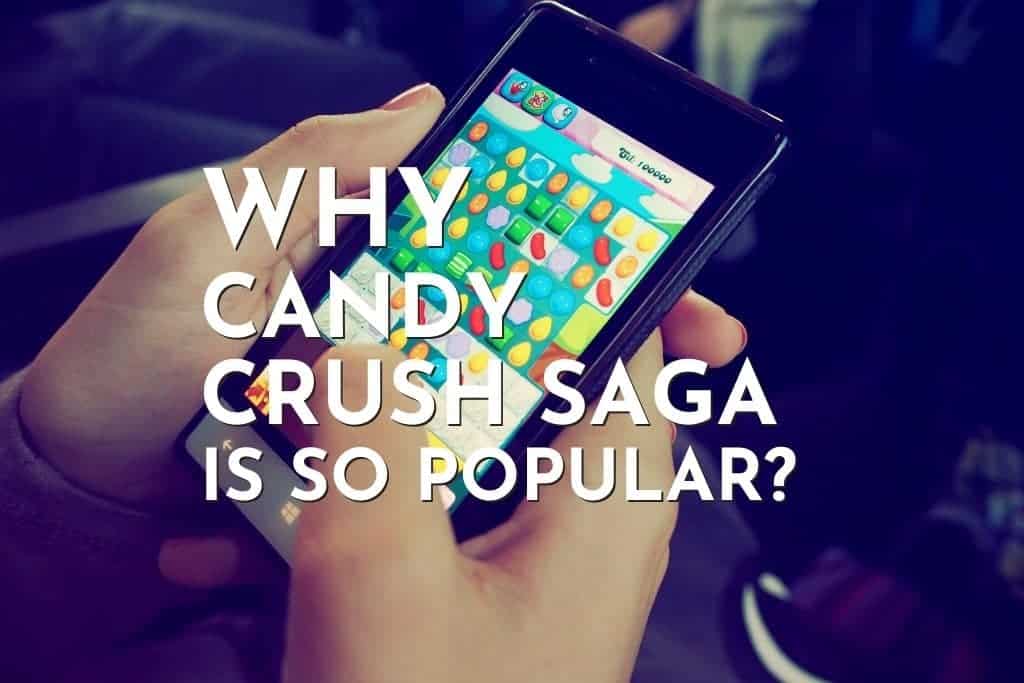If you told us that you’ve never run into someone playing Candy Crush in your life, we wouldn’t believe you at all. Basically, any activity that involves some amount of waiting is a great place for people to whip out their tablet or phone and start playing Candy Crush at high volume, completely unaware of the disturbance they are causing.
So what drives the popularity of this mobile game that is basically a cross between Tetris and a Las Vegas slot machine? Well, for starters, it is incredibly simple and fun to play. Just about anyone, including your 70-year-old grandma, can get into Candy Crush and enjoy it. On top of that, it provides some stress relief for people who just got back home after a hard day of work at the office. Kids who aren’t old enough for shooters or MMORPGs are also known to play Candy Crush.
So, exactly what kind of figures does this game post? According to a February 2019 article on Observer, Candy Crush was only behind Spotify and Pinterest in the list of apps people logged into using Facebook. And among all the apps in the world that require you to log in, all 3 versions of Candy Crush made it into the top 10 list for monthly active users.
Candy Crush beats out Angry Birds and Pokémon Go when we talk about the most popular games of all time on Android. Based on research done by market analyst Sensor Tower, Candy Crush earned an average of $4.2 million from its players in 2018, EACH DAY.
There are indie devs who don’t make this much money across their entire lifetime. King, the original studio that made this game, has earned 1.5 billion USD from it, and there were 230 million players for Candy Crush in 2018- an increase of 17 percent over 2017.
NYU associate professor on addictive behavior, Adam Alter, claims that Candy Crush eats up those 5 hours of slack time during your day in which you’ve got nothing important to do. Essentially a boredom killer, it is by design extremely easy to get into. You will find people with Candy Crush Soda Saga, Candy Crush Jelly Saga, Candy Crush Friends Saga, all installed on the same device. These versions are essentially reskinned of one another with the same game underneath.
One funny reason why players have multiple versions of Candy Crush installed is that the game will time you out if it detects you’ve been playing for too long. So players log out of one version and get right into another. Or they really spend real money on tokens.
Released all the way back in 2012 for Facebook, it is considered one of the first-ever successful freemium games. Eventually, it was released for iOS, Android, and Windows. But how is this 7-year-old game still so popular? In fact, it is gaining new players year after year. What are the reasons behind the popularity of Candy Crush Saga?
It Is Extremely Easy To Learn

On the one hand, you’ve got Triple-A studios that are putting out large-scale story-driven games that transport you into a fantasy world with maximum immersion. Then, you see Candy Crush, which basically asks you to move around rows of candies on your phone screen.
Yet, this game made an average of $4.2 million dollars a day in 2018 while being “free to play.” Grandmas, aunts and uncles, mums and dads, and none gamers everyone are playing this game. The reason? It is extremely accessible, from the mechanics to how it all feels as you play.
The tutorial is intuitive, the icons and achievement notifications are eye-catching, and the UI is polished. The nice thing about easy games is that they can be marketed to a wider audience, resulting in higher potential revenue.
You Get A Strong Sense of Satisfaction

In most competitive games, you get a feeling of accomplishment from beating other players who are just as skilled as you. In a narrative-driven single-player game, you feel satisfied as you unravel more of the story and watch a progression in the protagonist’s character.
Candy Crush has neither of those elements; you don’t have PvP or any meaningful story. Yeah, you are riding a little train in some magical world helping dragons bathe in candy, but that is not exactly a great story. The sense of meaning and satisfaction instead comes from 3 onboarding mechanisms used in casual games- Beginners Luck, Destiny’s Child, and Getting a Free Lunch.
When you start up Candy Crush Saga for the first time, you easily get 3 stars in the early levels, which makes you think, “Hey, I am really good at this; maybe I should try it some more.” Or shall we say you feel “destined” to go on this journey since you don’t lose lives initially?
As you keep progressing, the Free Lunch concept kicks in extra moves, booster packs, bonuses, charms, etc. give you new strategic avenues and cool ways of crushing candy. You think you’re getting these because of skill, but in truth, it is all scripted and luck-based. The first 35 levels take maximum advantage of the aforementioned 3 techniques and are the “onboarding” phase of Candy Crush.
Progressive Difficulty System

After installing Candy Crush Saga, you’ll find yourself breezing through early levels in no time with 3 stars. This is not because of skill; the game is designed to make you feel comfortable early on to get you “on board” with the mechanics and visual style.
You think it is beginners’ luck, or maybe you are destined to play more levels. But gradually, the grid becomes more complex, with new types of candy being introduced. The experience gets more challenging over time, and before you realize it, you’ve put so many hours into this game that you don’t feel like going back.
Your transition from “wow, this is easy” to “I must beat this new level.” Some unique mechanics keep things interesting, such as the striped candy, which clears an entire row. Or the sprinkled candy, which removes all candy of one color.
Time levels and ingredient levels add complexity and make level progression harder over time, incentivizing you to spend money. Most indie game devs struggle with balancing difficulties. Too much, and players will get frustrated. Too little, and they will get bored. Candy Crush has a dynamic difficulty scaling system that manages to keep you excited at all levels.
Variable Ratio Schedule
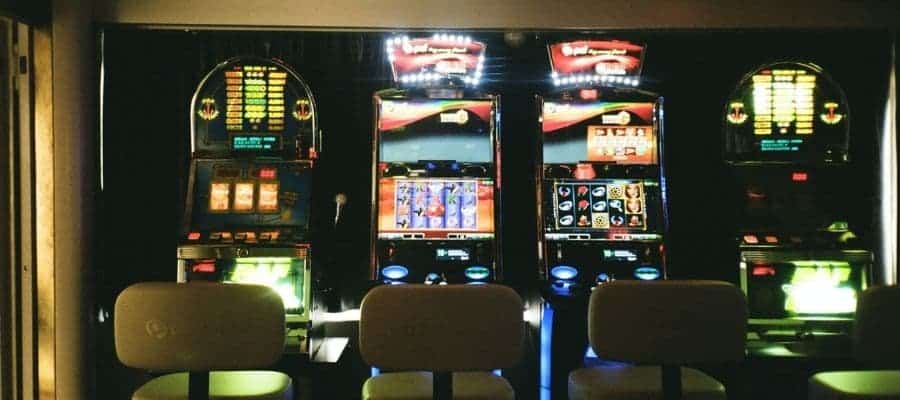
Despite what some Candy Crush aficionados may think, the game is more about luck than actual skill. The randomly assigned array of colors determines how easy or hard it is to beat a level. Candy Crush will make you win every so slightly more than you lose, so you get a sense of fairness despite how random the whole thing is.
Moreover, just like a slot machine addict, you keep coming back for more because there is constant anticipation of what the next level will look like. You don’t know when the next victory will come, but your overall win percentage is just enough to keep you coming back. The key here is to give players the impression that they are in control and that their decisions matter. There is a scientific term for this type of psychological manipulation Variable Ratio Schedule of Reinforcement.
Scarcity And Impatience

If you ever played Candy Crush before, you know that the game gives you 5 lives. These lives are based around self-replenishing charges, and once you lose a life, it will be regained in 30 minutes. Losing all 5 lives on an extremely hard level means you have to wait 2.5 hours before you can play again.
The system with a fixed number of lives is something we take for granted in most arcade games or casual mobile titles. But it goes much deeper- you are playing into a technique game developers call Fixed Interval Torture.
Basically, they make you wait for something you really like to build up impatience. Either you capitulate and spend money on more lives, or you can earn lives by inviting friends on Facebook.
Another alternative is connecting your Facebook account to multiple phones or installing different flavors of the game on the same phone. This timer system means you can end all your lives at home, get on the train, and start playing once your lives have replenished. Or, you can play while stuck in traffic. Basically, you keep coming back to play thanks to the impatience and anticipation of getting back your 5 lives.
It Gets New Content Updates Regularly

According to a report by Palm from 2013, the Candy Crush Saga team was creating and testing new levels every 2 weeks. Back then, it was still new to the mobile platform, its original Facebook version having been released just a year earlier. And despite being a relatively young game, it already had 544 levels.
A smart reinforcement pattern exists within the game to make sure you’re never stuck on any level, constantly giving you options to keep progressing through intelligent randomization. For each one in a million cases where you do get stuck, the board will reset. The devs focus on 4 aspects while designing levels- difficulty, pace, flow, and hooks. They constantly vary the difficulty, so it isn’t too easy or challenging.
By messing with the pace, they change your experience and keep things fresh. The flow keeps you progressing towards a goal constantly. The fact that each level is different from the last one acts as a “hook” to draw you in and keep you playing. New content releases coupled with tightly integrated socialization means existing players are retained while also drawing in new users daily.
The Attractive Candy Artwork
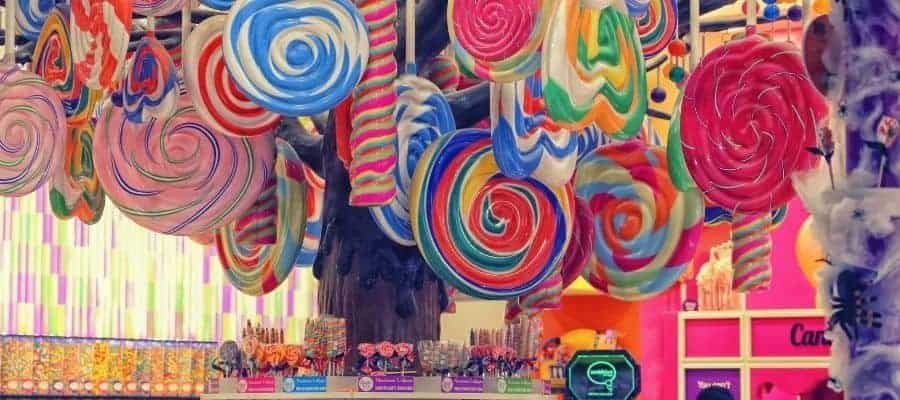
Most of the mainstream casual games utilize simple yet creative artwork and highly stylized UI elements to attract players. You can compare these visuals with something like Call of Duty and say they look stupid, but this is a game about matching candy.
Its whole premise is based on simplicity and accessibility. Everyone from kids to grandparents can play it, unlike a game like Quake, which is so violent your mom probably forbids you from playing it if you’re under 15. Not only does the simplistic artwork make it accessible to a wider age group, but it also lets players track the more important stuff- like achievement notifications and the little pop-ups, which display words of encouragement as you smash through rows of candies.
The vibrant colors capture and elaborate sound design capture your attention, while particle effects add some bling to keep the girls interested. King has found that the most common profile among their casual players is a woman over 35 looking for something to relax and pass the time. When you add it all up, the artwork makes complete sense.
Power of Ownership and Possession
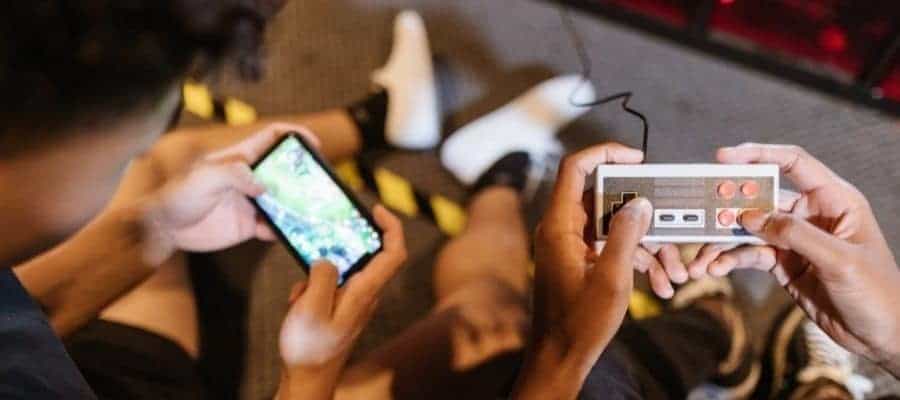
Candy Crush constantly adds new forms of ownership and possession to help out its players by allowing players to collect booster candies which come in handy during extremely tough levels. These virtual goods can be obtained through gameplay, but most are purchased with real money.
By investing real-world money into a virtual good, a part of you stays within the game and keeps nudging you to come back so you can use your product that you spent time and money on. These boosters can be used anywhere between 1 to 3 times per level and will cost you 25 to 50 dollars if you purchase them with real money. The key to getting new players is by offering these special items outside of the in-game shop. Some players try and collect all boosters to build a perfect collection, either through hours of gameplay or by spending money.
Micromanaged Randomness
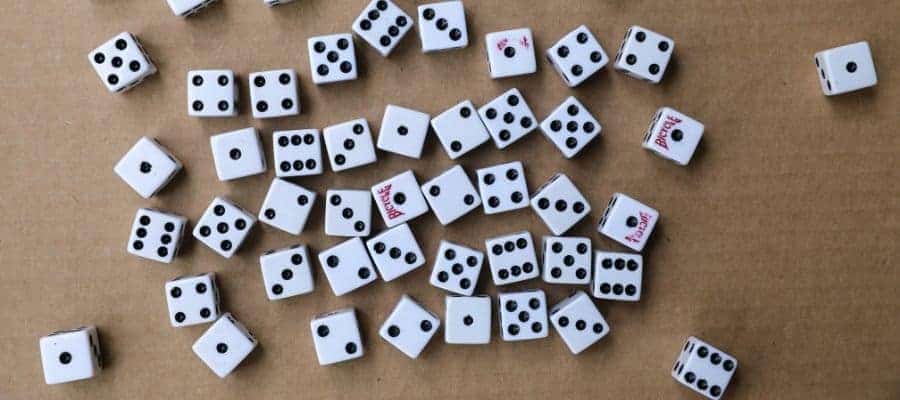
There are plenty of things we avoid because we are afraid of being ridiculed by friends. You see, there is this mechanism in game development that makes it socially unappealing for you not to progress forward.
This is what happens when you connect your Candy Crush Saga game to Facebook, and all your friends see you’ve been stuck on one level for several days. And when you lose a level, the game provides you with negative feedback. Finally, if you don’t sync up your Facebook or break your phone, all progress is lost, which forces you to start over again.
Social Mechanics

What is the first thing you see when you download and launch Candy Crush Saga? A pop-up to connect your Facebook account so you can sync game progress, and it also prompts you to invite your friends. This is a great way to attract new players through existing ones and builds up a social atmosphere by getting you to interact with friends.
You can also gift friends treasures, lives, or help them unlock additional episodes. What makes these gifts so important is their value in terms of game currency.
There is even a built-in request system through which you can ask friends for help in order to unlock an episode. You can either spend 0.99 dollars or ask some close buddies to install the game so that you can keep progressing forward.
Finally, you’ve got leaderboards and maps to see how far your friends have progressed within the game in comparison to you. All these design elements harbor competition through boasting, touting your own progress, and generate envy in the minds of others. The end result? More players, who will play longer and spend more money.
Unique Experience Compared to Other 3 Match Games

Unlike most other 3 match games such as Bejeweled, Candy Crush Saga features some intense mechanics which aren’t immediately apparent on the surface. You can crush candy by matching 4 in a row, 5 in a row, and by forming T- shaped candy. Eventually, unique candy types are introduced, such as the sprinkled candy, striped candy, and licorice coils that interact with surrounding candy in different ways.
Randomness is carefully micromanaged to ensure that no-move situations never occur, and you will notice repeatable nuances such as layouts which deliberately make it challenging for you to get 4 out of 5 candies together. And let us not forget the “near misses,” which give you a short burst of dopamine, just like slot machines which “nearly” result in a jackpot.
It Appeals To Our Fundamental Cognitive Process

At the highest level, you will notice that entertainment media taps into our most basic psychological tendency of recognizing patterns. This evolutionary trait within humans is what developers take advantage of by presenting you with puzzles to solve.
Scientifically speaking, we are looking for changes in patterns that are already familiar to us. Whether it be cracks in the sidewalk, news reports about missing people, or a tile-matching game on your phone.
One thing the human brain processes very well are visual patterns; ever noticed how you see faces in the clouds? We are also looking for design patterns within everything from wallpapers to street maps. By tapping into our brain’s fundamental drive to process patterns, game designers create experiences we cannot put away. The feeling of satisfaction we get by solving a puzzle or recognizing a trend is exactly how we feel when we destroy candies in Candy Crush.
Global Success

Some mobile games burst onto the scene with massive download figures and generate millions within months but fizzle out eventually because they were popular only in local markets. The highly localized success of a game ensures it will hit the ceiling in the long term. Candy Crush Saga has a huge following spanning the entire globe-from Europe and North America, all the way through the Middle East to China, Japan, and South Korea.
This ensures a high chance of attracting new players in a much wider market. When you combine this with the fact that Candy Crush has a much more balanced gender appeal compared to some other casual games, it becomes apparent how this game has thrived for so long.
The Empowerment Of Creativity

Candy Crush lets you know when you’ve executed some complex moves by rewarding you with words such as “Tasty!” “Sweet!” or “Delicious!”. This positive feedback reinforces the idea that you need to be creative in order to rack up maximum points.
And the game rewards players for successfully following the tutorials that are displayed whenever a new candy or game concept is introduced. The whole game is based around unlocking new levels, candy types, and boosters, so you are constantly pushing forward like a mule chasing a carrot on a stick.
To Pay Or Not To Pay

We as humans have a natural tendency never to leave goals incomplete, whether it is reading a book or watching a TV series. This mostly works when we enjoy something, so we keep progressing forward till the end. Candy Crush Saga moves the goalpost forward constantly, and things get progressively harder over time.
At higher levels, you will be compelled to spend money if you want to replenish your 5 lives. You have the choice to wait 2.5 hours between sessions, but most addicted players will pull out their credit cards instead.
Many people constantly boast about how they got to level 165 without spending a penny, but they don’t realize that every hour they spend in-game makes it more likely for them to spend money. And if they don’t, another person with less self-restraint who got to level 165 through gameplay alone will finally give up and open up their wallet.
Conclusion
Games like Candy Crush use the concept of moving goals to keep their players lured in. No matter how many times you move halfway towards a goal, you will not reach it. This is called Zeno’s Paradox.
As players get close to achieving one goal, the developers either move up the maximum level count or redirect players towards another version of the game with different goals. And in combination with moving goals, there is the anticipation that comes with unpredictability. Kind of like a slot machine that lures you in with hope; your addictive fantasy is exploited by Candy Crush. By rewarding you for completing cascading goals, the game makes you think you’re eventually getting there.

